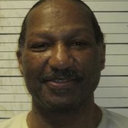
A two-week federal trial on the constitutionality of Arkansas’s lethal-injection protocol came to a close May 2, 2019, as the parties presented legal arguments to the court after eight days of testimony. U.S. District Judge Kristine G. Baker must now determine whether the state’s three-drug protocol beginning with the sedative midazolam is allowable. Lawyers representing a group of death-row prisoners presented testimony from witnesses of recent executions, as well as medical experts who said that midazolam does not render prisoners unconscious. In his closing argument, the prisoners’ lawyer Will Freeman likened the three-drug cocktail of midazolam followed by a paralytic drug and the heart-attack inducing drug potassium chloride to being conscious while “having gasoline poured on you and being set on fire.” The Arkansas attorney general’s office presented testimony from other execution witnesses and medical professionals that contradicted the prisoners’ evidence. “The prisoners’ burden is … [to] show that the midazolam protocol is sure or very likely to cause needless suffering by pointing to actual objective evidence, or at the very least, demonstrating a strong scientific consensus,” Assistant Attorney General Jennifer Merritt argued. “They’ve simply failed to carry the burden.”
Much of the testimony in the trial came from people who had witnessed the four executions performed in Arkansas in April 2017, with an intense focus on the executions of Kenneth Williams (pictured) and Marcel Williams. Kelly Kissel, a former Associated Press reporter who has witnessed ten executions, provided a detailed timeline of Kenneth Williams’s execution. “Three or four minutes into the execution was where he had the episode in which his body lurched forward 15 times in quick succession and then five additional times at a slower rate,” Kissell testified. “It was lurching, jerking, convulsing.” Kissel also testified that Williams moaned loud enough that he could hear it in the witness chamber, even though the microphone in the execution chamber had been turned off. Cassandra Belter, a lawyer from Philadelphia who had assisted in Kenneth Williams’s defense, corroborated Kissell’s account. “He was convulsing up and, like, bucking against the restraints,” she testified. “At that point, I think at 10:55 [p.m.], he also groaned in pain. The breathing became audible, he was gasping as it grew stronger to the point that it sounded like he was choking.” Former Arkansas Times reporter Jacob Rosenberg recounted the execution of Marcel Williams, testifying: “At the time he was breathing heavily with [his] chest lifting off of the gurney and his back arching in order to do so. And his eyes began to slowly droop, though one sort of stayed open throughout this process, and his heavy breathing and arching sort of continued throughout this time.”
The state’s witnesses characterized the prisoners’ reactions differently, describing them as “muscle spasms,” rather than “convulsions.” State Sen. Trent Garner, a legislative proponent of capital punishment who witnessed Kenneth Williams’s execution, said that “[f]or approximately 10 to 15 seconds there were some brief involuntary muscle spasms. His chest rose two to three inches a few times.” Garner, who has no medical training, testified that he can recognize pain from seeing soldiers killed and injured during his military service in Afghanistan. “I call it involuntary because I didn’t see any pain on his face, no grimacing. I didn’t hear any noises that would indicate pain,” he said.
The two sides also presented competing testimony from medical professionals. Craig W. Stevens, a professor of pharmacology at Oklahoma State University in Tulsa, said “For a certain, [the second and third drugs are] going to cause severe pain because midazolam does not produce anesthesia. … Even at massive doses, persons still respond to noxious stimulus. There will be pain and suffering masked by the paralytic.” State’s witness Dr. Daniel Buffington, a clinical pharmacologist with the University of South Florida, said convulsions are a known side effect of midazolam. “They would go from still to moving or moving aggressively or gasping or coughing, making an audible sound. It’s when the body is sending a signal to the body so it’s a neuromuscular response to try to get more air at that moment,” he said.
In closing arguments, Freeman called the Arkansas execution protocol “a clear step backward. It is sure or very likely to cause serious illness and needless suffering when it is implemented, and, respectfully, we have identified an alternative that is feasible; it is readily implemented and is, in fact, significantly likely to reduce the substantial risk of severe pain.” To fulfill the requirement that the prisoners present a viable alternative execution method, attorneys offered secobarbital, a drug used in physician-assisted suicide, or the firing squad.
(Michael Hibblen, Federal Trial Begins As Arkansas Death Row Inmates Challenge Execution Drug, KUAR, April 23, 2019; Andrew DeMillo, Trial begins over Arkansas’ use of sedative in executions, Associated Press, April 23, 2019; Michael Hibblen, Expert In Arkansas Lethal Injection Trial Says Inmates ‘For A Certain’ Feel Pain, KUAR, April 24, 2019; Michael Hibblen, Anesthesiologist Testifies As Arkansas Lethal Injection Drug Trial Ends Week 1, KUAR, April 26, 2019; Michael Hibblen, Expert Witnesses For The State Contradict Previous Testimony In Lethal Injection Trial, KUAR, April 29, 2019; Michael Hibblen, Top Arkansas Prison Officials, State Lawmakers Describe Witnessing 2017 Executions, KUAR, May 1, 2019; Michael Hibblen, Closing Arguments Delivered In Arkansas Lethal Injection Trial, KUAR, May 2, 2019.) Read the Death Penalty Information Center’s Secrecy Report. See Lethal Injection.



